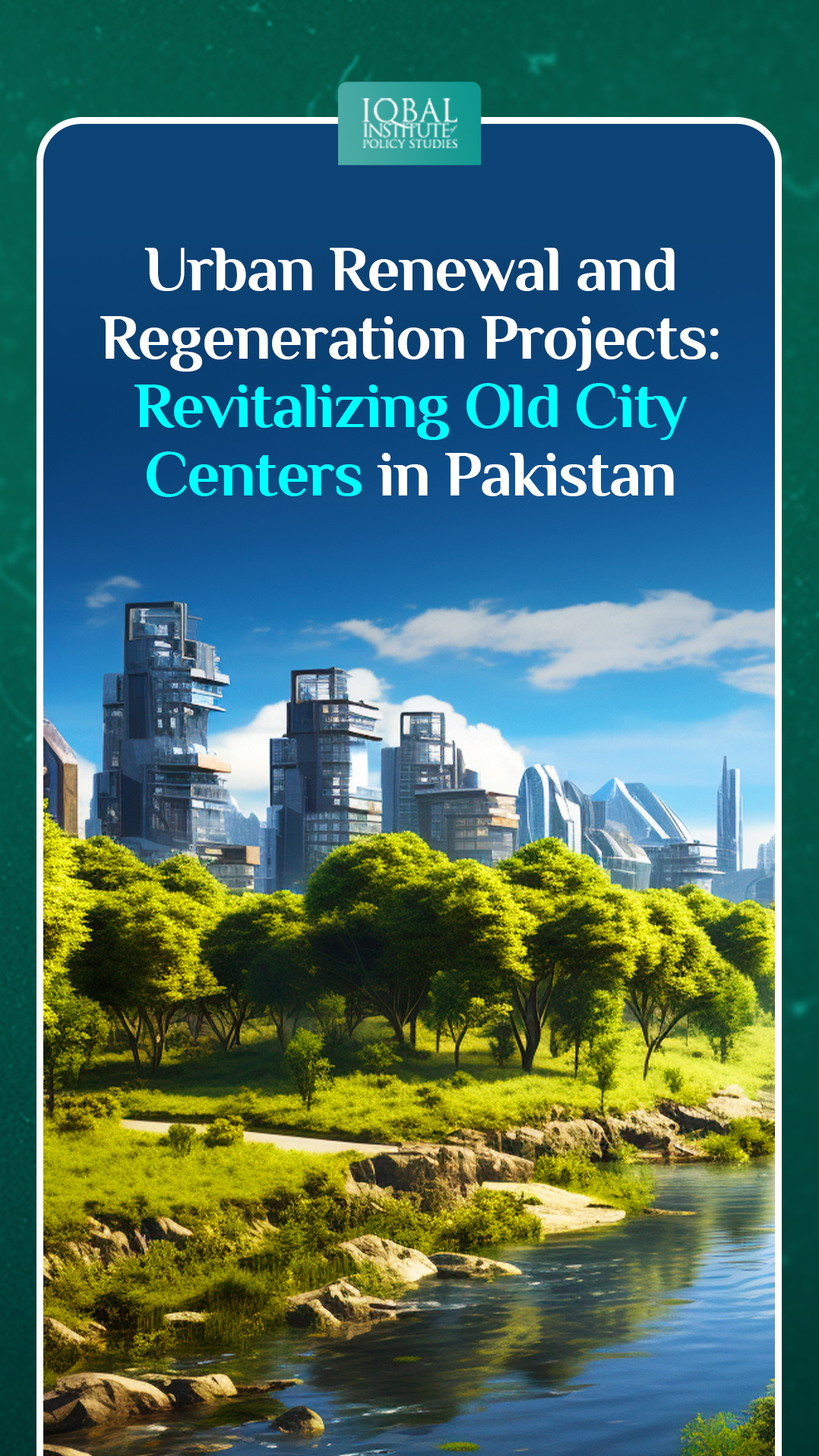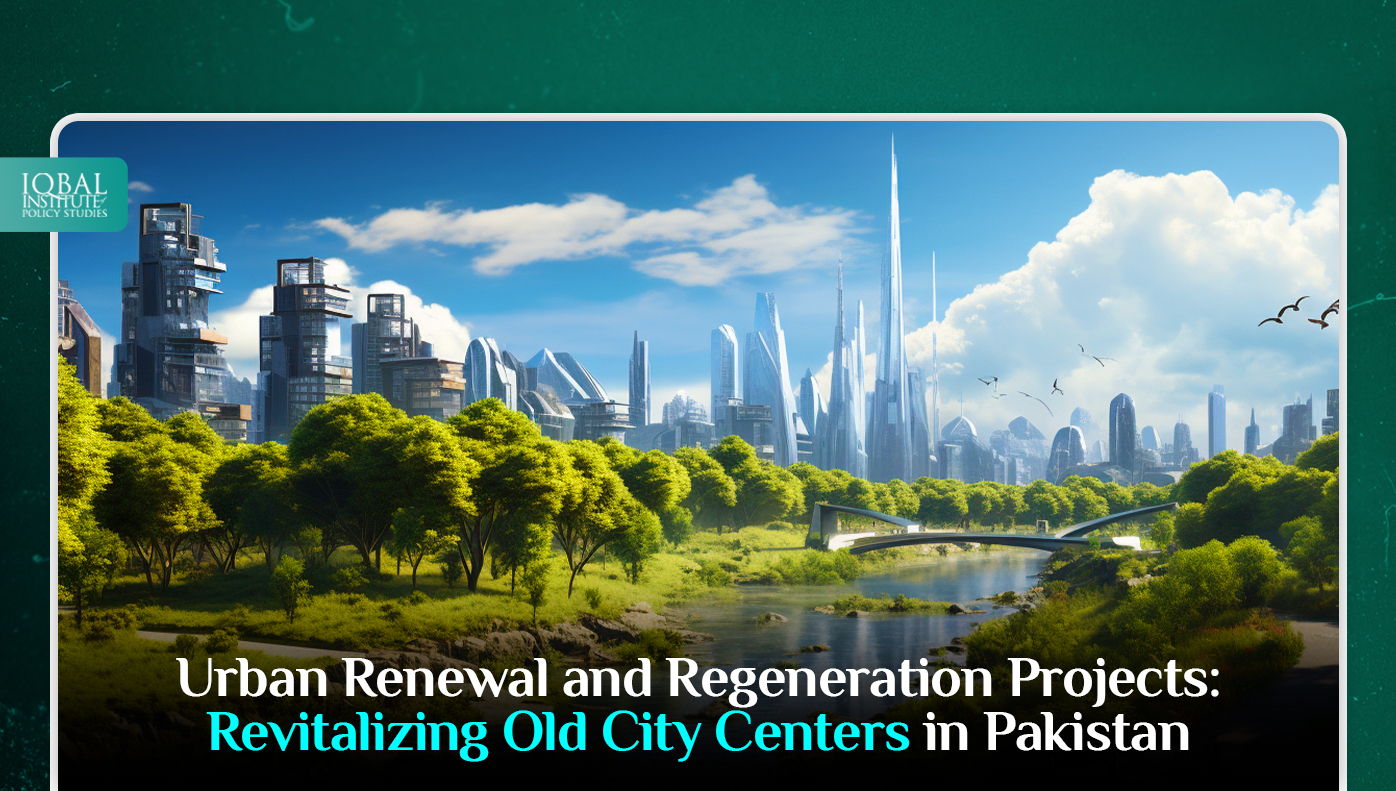Introduction
In recent years, Pakistan has experienced rapid urbanization, leading to the transformation of city skylines and the emergence of modern urban centers. Amidst this progress, many historic city centres have faced neglect and decay. Urban renewal and regeneration projects have emerged as a vital strategy to breathe new life into these old city centers, preserving their cultural heritage while meeting the demands of modern urban living. This article delves into the significance, challenges, and successes of urban renewal and regeneration projects in Pakistan, focusing on their potential to revitalize the charm and identity of the nation’s cities.
As urban renewal projects gain momentum across Pakistan, a crucial consideration is sustainability. Sustainable urban renewal involves not only preserving heritage and enhancing aesthetics but also ensuring the long-term economic, social, and environmental impact of the projects.
One of the key components of sustainable urban renewal is environmental stewardship. Revamped city centers can incorporate green spaces, tree-lined avenues, and sustainable building practices. By prioritizing energy-efficient infrastructure and reducing carbon footprints, these projects contribute to mitigating the effects of climate change. Rainwater harvesting, waste recycling, and renewable energy integration are essential aspects that make urban centers more eco-friendly and self-sustaining.
Moreover, sustainable urban renewal projects focus on improving accessibility and connectivity. Well-planned transportation systems, pedestrian-friendly streets, and efficient public transit contribute to reduced traffic congestion and air pollution. By promoting non-motorized transport options like cycling and walking, these projects prioritize the health and well-being of residents
Preserving Heritage and Identity
The historic city centres of Pakistan hold immense cultural and architectural significance, representing the nation’s rich history and heritage. Neglect and urban sprawl have threatened the authenticity of these areas, prompting the need for preservation and rejuvenation. Urban renewal projects strive to strike a balance between modern development and heritage conservation. By restoring old buildings, revamping public spaces, and preserving traditional art and architecture, these projects aim to celebrate the past while embracing the future.
The preservation of heritage also involves reviving lost art and craftsmanship. Many historical buildings boast intricate carvings, delicate frescoes, and unique motifs that hold artistic and cultural value. Over time, such craftsmanship may have faded or been forgotten. Urban renewal projects provide an opportunity to revive these art forms, empowering local artisans and preserving the traditional skills passed down through generations. By incorporating traditional art into modern structures, urban renewal projects blend the past with the present, creating a harmonious coexistence of architectural styles.
Enhancing Livability and Urban Aesthetics
Urban renewal initiatives not only preserve heritage but also improve the overall livability of these city centers. Pedestrian-friendly zones, green spaces, and improved infrastructure create a vibrant and welcoming environment for residents and visitors alike. Revitalized city centers offer a mix of commercial, residential, and cultural spaces, fostering a sense of community and encouraging local businesses to flourish. The integration of modern amenities ensures that the city center becomes a hub of activity, attracting people from diverse backgrounds. Moreover, The transformation of these areas into vibrant, people-centric spaces fosters a sense of community and encourages social interactions.
Creating Economic Opportunities
Urban renewal projects are catalysts for economic growth. The revitalization of old city centers attracts private investment and tourism, boosting the local economy. Urban renewal projects breathe new life into historic city centers, creating an attractive environment for businesses and entrepreneurs to thrive. As the old buildings are restored and transformed into modern commercial spaces, they become prime locations for startups and established businesses alike. New businesses, restaurants, and cultural establishments set up shop, generating employment opportunities and fostering entrepreneurship. Additionally, the influx of tourists contributes to the growth of hospitality and related industries, further fueling economic development. . As new businesses emerge and existing ones expand, they require a skilled workforce to operate efficiently. These projects generate employment opportunities across various sectors, including hospitality, retail, architecture, and construction. With job opportunities on the rise, urban renewal fosters economic growth and improves the standard of living for residents in and around these revitalized city centers. The boost in local economic activities further strengthens the economic foundation of the region.
Challenges and Solutions
Urban renewal and regeneration projects are not without challenges. Encroachment, aging infrastructure, and property rights issues often complicate the process. Bureaucratic red tape and lack of funding can hinder the progress of these projects. To address these challenges, effective collaboration between the government, private sector, and local communities is essential. Public-private partnerships can bring in expertise, resources, and innovation to overcome hurdles and expedite the renewal process.
Success Stories in Pakistan
Several cities in Pakistan have successfully undertaken urban renewal projects, breathing new life into their historic city centres. Lahore’s Walled City Project is a shining example, where the restoration of historic landmarks, such as the Badshahi Mosque and Lahore Fort, has revived the cultural heart of the city. Karachi’s Empress Market restoration and Peshawar’s Qissa Khwani Bazaar revitalization project are other success stories that demonstrate the transformative impact of urban renewal on old city centres.
Conclusion
Urban renewal and regeneration projects are pivotal in preserving Pakistan’s cultural heritage and promoting sustainable urban development. By blending the past with the future, these projects create vibrant and livable city centers that inspire pride among residents and visitors alike. As Pakistan continues to grow and urbanize, it is crucial to prioritize the preservation of its heritage while embracing modernity. With collective efforts and visionary planning, urban renewal will pave the way for resilient and dynamic cities that retain their unique identity while progressing towards a brighter future.
This Policy Brief is written by Maha Nazami. Maha is a Research Analyst at the Iqbal Institute of Policy Studies (IIPS).



Leave a Reply